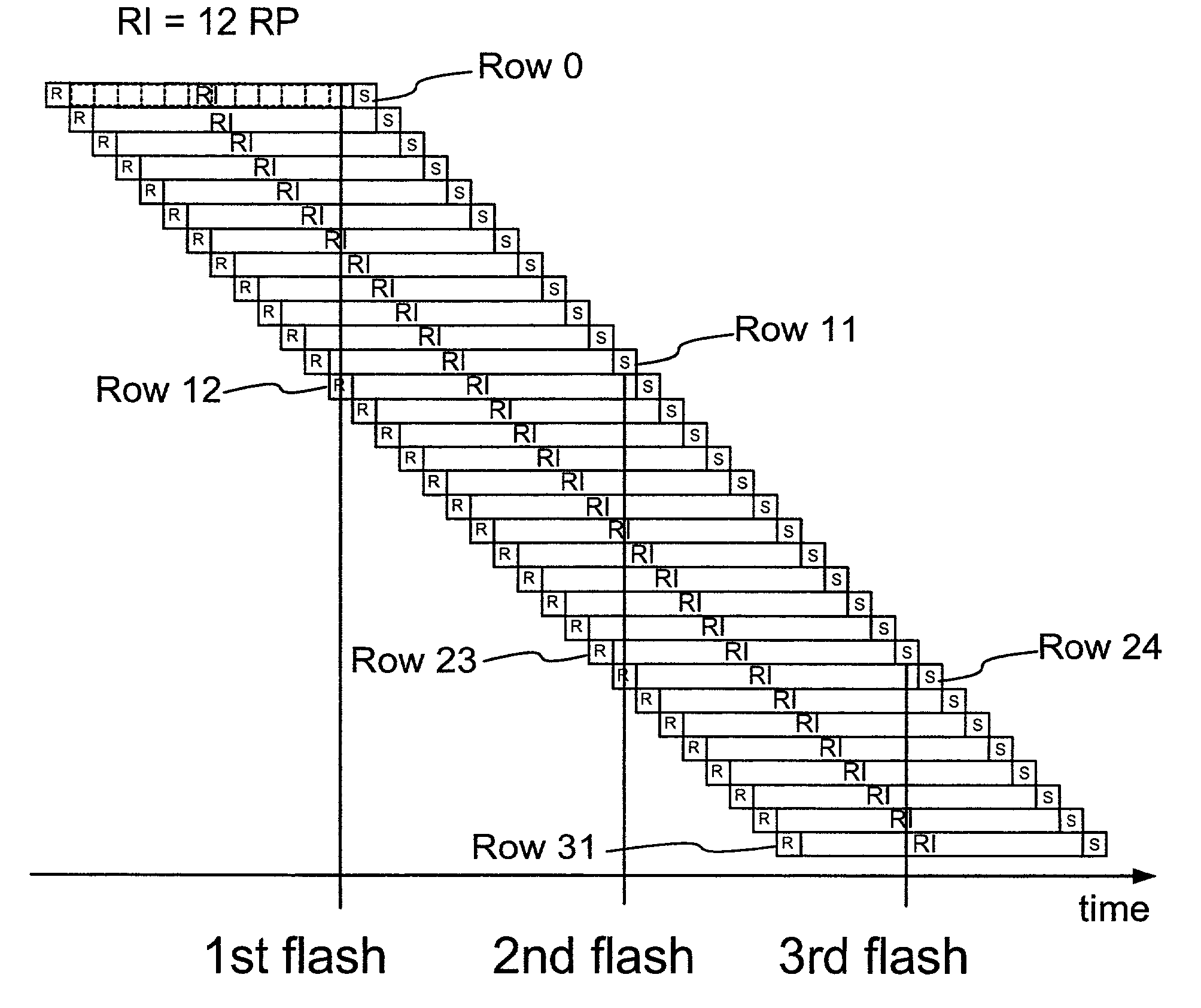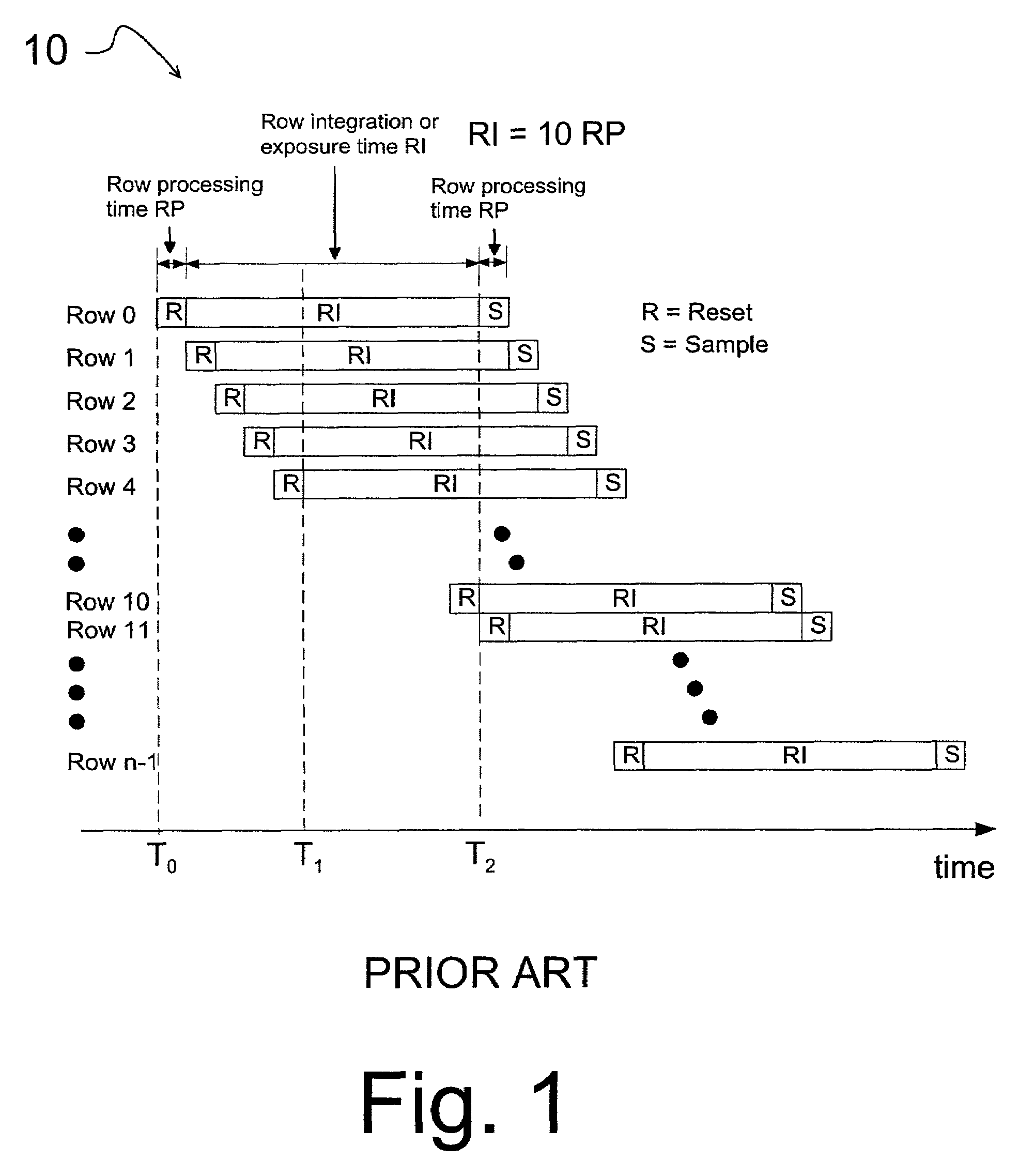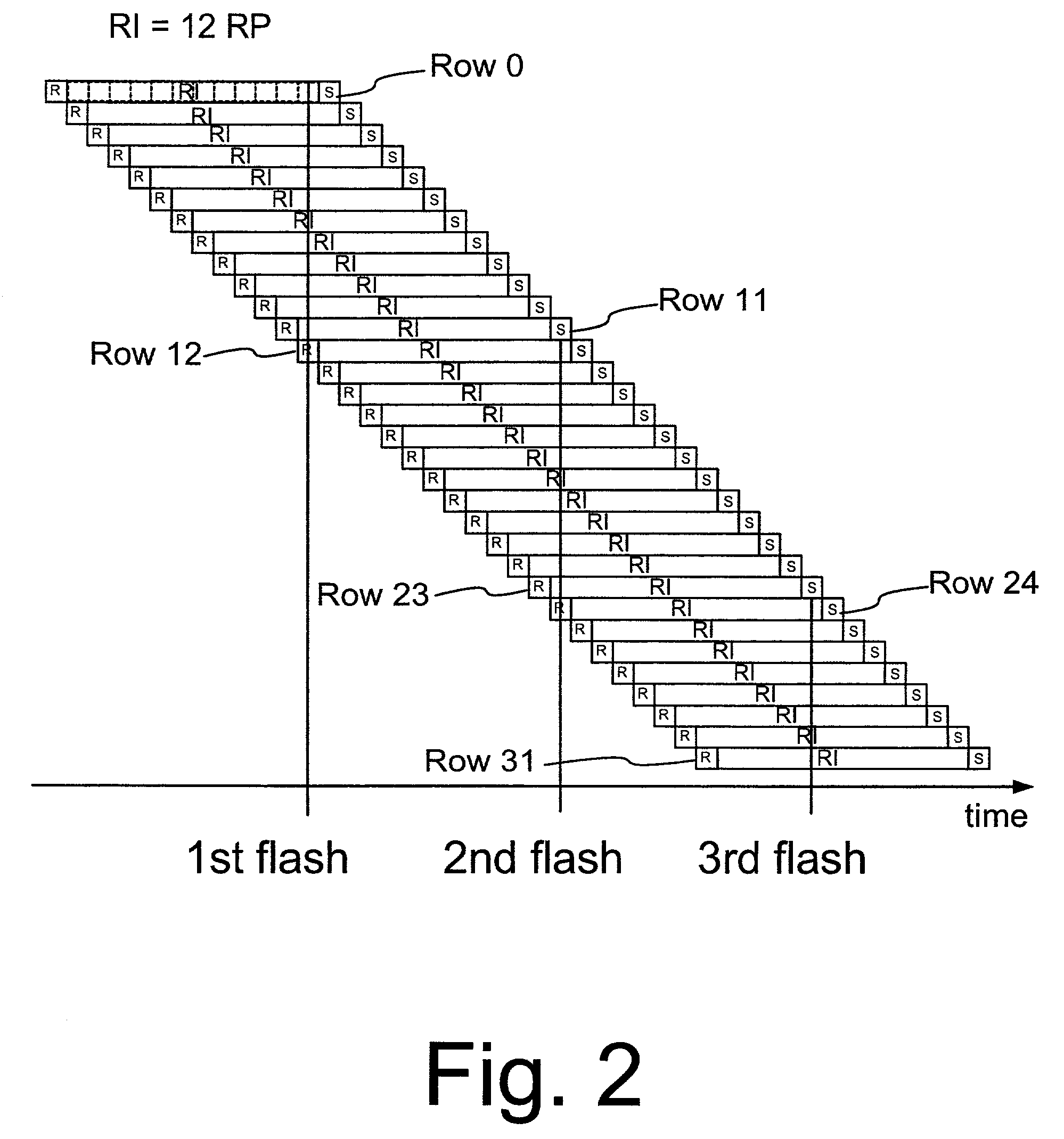Control of a flash unit in a digital camera
a digital camera and control technology, applied in the direction of instruments, television systems, television system scanning details, etc., can solve the problems of large bandwidth for serial and digital transfer of image information out of the sensor circuit, row-by-row processing, and complex sensor structure, etc., to achieve compact digital camera, improve image resolution, and reduce power consumption.
- Summary
- Abstract
- Description
- Claims
- Application Information
AI Technical Summary
Benefits of technology
Problems solved by technology
Method used
Image
Examples
Embodiment Construction
[0039]The operation of a rolling electronic shutter (10), shown in principle in FIG. 1, has already been discussed above in connection with the description of the prior art.
[0040]FIG. 2 shows, in principle, how the flashes of an electronic flash unit (hereafter flash unit) of the invention are timed in connection with a matrix sensor to be processed and exposed row by row according to Fig. 1 or in a way substantially corresponding to FIG. 1.
[0041]According to FIG. 2, the start of the integration or exposure time (RI) of each pixel row in the sensor is delayed from the start of the exposure time (RI) of the preceding row by the time of the reset function (R), i.e. by the row processing time (RP). For this reason, the exposure times of successive rows are shifted with respect to each other as shown in FIG. 2.
[0042]According to the invention, the flashes of the flash unit to be used for one image are timed in such a way that each single flash of the flash unit is triggered at a point o...
PUM
 Login to View More
Login to View More Abstract
Description
Claims
Application Information
 Login to View More
Login to View More - R&D
- Intellectual Property
- Life Sciences
- Materials
- Tech Scout
- Unparalleled Data Quality
- Higher Quality Content
- 60% Fewer Hallucinations
Browse by: Latest US Patents, China's latest patents, Technical Efficacy Thesaurus, Application Domain, Technology Topic, Popular Technical Reports.
© 2025 PatSnap. All rights reserved.Legal|Privacy policy|Modern Slavery Act Transparency Statement|Sitemap|About US| Contact US: help@patsnap.com



